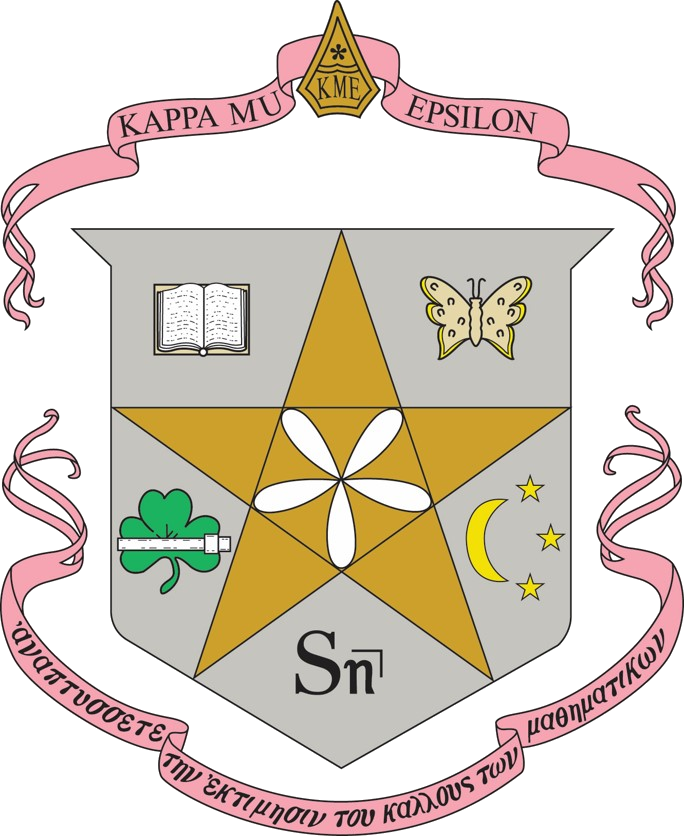Brief History of Kappa Mu Epsilon
Compiled and Edited by Cynthia Huffman, 2018
Updated from the Sixtieth Anniversary Edition 1991 by Mary S. Elick and 2014 Edition by Pete Skoner
90th Anniversary History and Information
The rapid growth of universities and colleges in the United States in the latter part of the 19th century led to the development of professional societies in every field. The fields of law, medicine, science, engineering, teaching, and others developed societies with memberships numbering into the thousands. Local clubs were formed at larger educational institutions to promote interest in special departmental objectives. Desire for affiliation with other groups of similar ideals led to the organization of these local clubs into national and state societies. In mathematics, Pi Mu Epsilon became the national society for instructors and advanced students who were in educational institutions offering graduate work in mathematics. The first societies open to mathematics students on the undergraduate level seem to have been primarily science societies. These organizations did not appeal very strongly to those whose interest was in symbolic thinking.
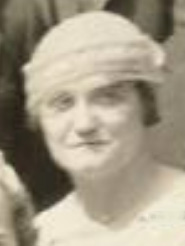
The need for a national mathematics society which would appeal essentially to the undergraduate was recognized, by both the instructors and students of mathematics. Dr. Emily Kathryn Wyant is considered the founder of Kappa Mu Epsilon, which was organized to fill this need. Dr. Wyant was a graduate of the University of Missouri and was a member of Pi Mu Epsilon. In the fall of 1930, she went to Northeastern Oklahoma State Teachers College at Tahlequah, as a professor of mathematics. She went to work with vigor and enthusiasm to transform the mathematics club there, which had been in existence since 1927, into the first chapter of a national honor society. Professor L.P. Woods, who was head of the Department of Mathematics and Dean of Men, was a valuable co-worker in working out the many details pertaining to the project. He was largely responsible for the completed rituals used for the initiation of members and installation of officers.
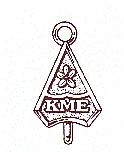
Since the first serious group of students of mathematics to be organized into a fraternity was the Society of Pythagoras, it was decided that the emblems of Kappa Mu Epsilon would be those of the Pythagoreans as nearly as possible. The emblems chosen for the new society were the five-pointed star and the pentagon. Since the five-leaved rose, ρ=a sin(5 θ), fits into the pentagon, the wild rose which usually has five petals was chosen as the society flower. The pink of the wild rose and the silver of the star were chosen for the colors. In making the crest, it seemed advisable that the sciences using mathematics should be recognized, so five emblems were selected for these and placed around the star on the shield. The motto in Greek is: "A-na-ptus-se-te tan ek-te-ma-sin too kal-loos ton matha-ma-ti-kon." Translated into English, it is "Develop an appreciation for the beauty of mathematics." The objective of the organization since its inception has been the fulfillment of this motto.
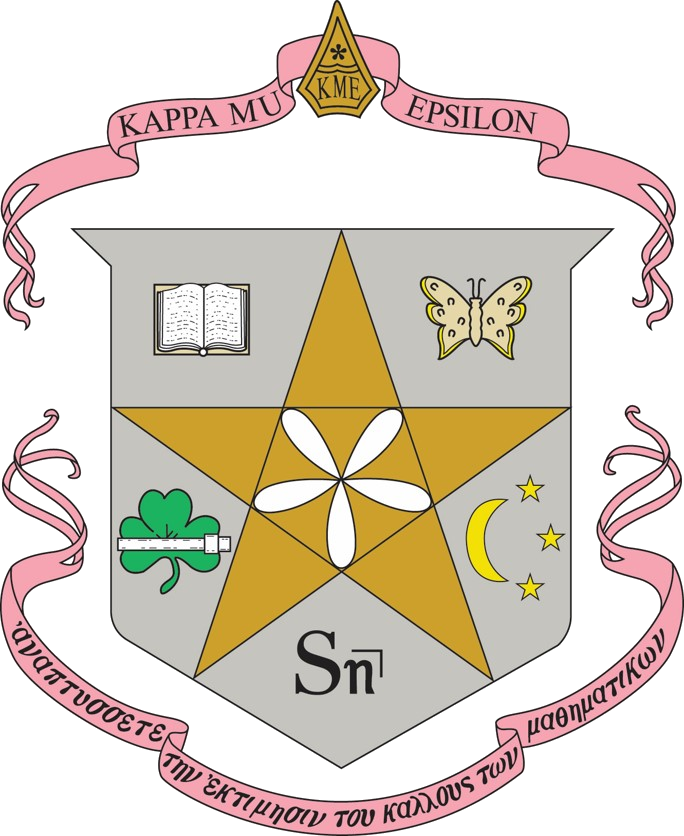
Dr. Wyant and Professor L.P. Woods along with 22 other faculty and students became charter members of Oklahoma Alpha, Northeastern Oklahoma State Teachers College, Tahlequah, on April 18, 1931, thereby making the dream for the mathematics honor society a reality. On the same day, the national organization elected the following officers: President Pythagoras, Dr. Kathryn Wyant; Vice-President Euclid, Professor Ira S. Condit, Secretary Diophantus, Miss Lorene Davis; Treasurer Newton, Professor L.P. Woods; and Historian Hypatia, Miss Bethel DeLay. At a later date, the names of specific mathematicians were omitted from the names of national officers.
The following newspaper account was given on the transformation of the Mathematics Club at Tahlequah into Kappa Mu Epsilon:
"The king is dead, long live the king." This may be applied to the "Mathematics Club" of Northeastern. As "The Pentagon" the club is dead; as Kappa Mu Epsilon, it lives. Kappa Mu Epsilon had its Founders Day Banquet last Saturday evening, April 18 at the Hotel Thompson. At that time, 24 people took the pledge and signed the constitution, thus becoming charter members of the Oklahoma Alpha Chapter. The banquet room was decorated in pink and white. Wild flowers and red buds were in the corners of the room. Tall white candles and floor lamps gave a soft light. Rose nut cups and hand painted place cards added to the color of the room. The menu as written inside the place cards told of paraboloids, ruled surfaces, and even parallel lines that were to be eaten at the mathematical table. Paul Lewis was the Radical Axis (toastmaster) of the evening. The program consisted of the fraternity song and the following talks: Parabolas (parables) by "Bus" Layton; Comic (conic) sections by Dr. Kathryn Wyant; Lipstick (elliptic) conditions by Clara Green and Transformations by Dean L.P. Woods. The formal transformation from the Pentagon into Kappa Mu Epsilon was directed by Mr. Woods.
Dr. Wyant had carried on an extensive correspondence with faculty members at other colleges in regard to the founding of a national honor society such as this. Among those with whom she corresponded were Dr. Ira S. Condit, of Iowa State Teachers College, Cedar Falls, and Dr. J.A.G. Shirk of Kansas State Teachers College, Pittsburg. Dr. Condit participated in the preliminary negotiations for the founding of the society and indicated such interest that he was elected the first Vice-President. The enthusiasm for this organization spread on his own campus with the result that the second chapter of Kappa Mu Epsilon, Iowa Alpha, was installed at Iowa State Teachers College (now University of Northern Iowa), Cedar Falls on May 27, 1931. Kansas Alpha, the third chapter, was installed on January 30, 1932, at Kansas State Teachers College (now Pittsburg State University), Pittsburg. Next was Missouri Alpha, at Southwest Missouri State College (now Missouri State University) in Springfield on May 20, 1932.

During the development of Kappa Mu Epsilon at Tahlequah, the Mississippi State College for Women and the Mississippi State College were progressing with their plans for inaugurating a mathematical society. Officers of Kappa Mu Epsilon urged the groups to give up their contemplated organization and become affiliated with Kappa Mu Epsilon, whose organization was already completed. They agreed to unite; Mississippi Alpha, Mississippi State College for Women, Columbus, was installed May 30, 1932, and Mississippi Beta, Mississippi State College, was installed December 14, 1932. This brought the membership to six chapters by the end of 1932.
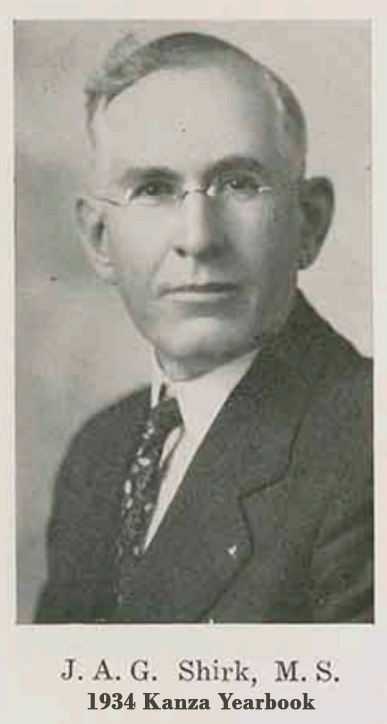
Much of the early success of Kappa Mu Epsilon is attributed to the dynamic and inspiring leadership of Dr. J.A.G. Shirk of KS Alpha (Pittsburg State University). He succeeded Dr. Wyant as National President in 1935 and served in that capacity until 1939. "The Early Years of Kappa Mu Epsilon," an article which appeared in the Spring 1942 issue of The Pentagon, was written by Dr. Shirk. Dr. Ira S. Condit, University of Northern Iowa, and Miss E. Marie Hove, Nebraska State Teachers College (now the University of Nebraska at Kearney), also helped guide the organization through its formative years. Dr. Condit assisted with formulating the policies of the society and setting up the first conventions; Miss Hove served as National Historian from 1933 to 1937 and National Secretary from 1937 to 1955.
All national officers of Kappa Mu Epsilon are listed in the KME History and Information booklet. All of them have played important roles in helping the society to grow. Since the first chapter was installed in 1931 with twenty-four members, the organization has grown to a membership over 88,000 as of 2018. As Dr. J.A.G. Shirk has aptly said in the article cited above, "History renders the ultimate verdict as to the value of any movement, and the growth and the influence of Kappa Mu Epsilon...give a portent of its greater contributions in the decades yet to come." There have been 205 chapters in the society, and there are currently 160 active and 45 inactive chapters of Kappa Mu Epsilon. The society has experienced consistent growth in recent years, including 13 new chapters since 2014.
Official business of Kappa Mu Epsilon is transacted at the national conventions by delegates elected by each chapter and by members of the National Council. Until 1979 the National Council consisted of the National President, National Vice-President, National Secretary, National Treasurer, National Historian, and the immediate Past President. Following the election at the 23rd Biennial Convention, the Council was composed of the National President, National President-Elect, National Secretary, National Treasurer, and National Historian. More recently the National Webmaster has been added to the National Council.
The convention is typically held in the spring every two years during odd numbered years for the purpose of electing officers, voting on motions to amend the constitution or by-laws, and deciding matters concerning the society. Another significant feature of the convention is the presentation of student papers. Student interest and involvement in this manner furnishes evidence that Kappa Mu Epsilon is fulfilling its five-fold objectives which are:
- to further the interests of mathematics in colleges and universities that place their primary emphasis on undergraduate programs;
- to help undergraduate students realize the important role that mathematics contributes to the development of civilization;
- to develop an appreciation of the power and beauty possessed by mathematics by virtue of its demand for logical and rigorous modes of thought;
- to provide a society for the recognition of outstanding achievement in the study of mathematics at the undergraduate level;
- to disseminate the knowledge of mathematics and familiarize its members with current progress in this important area of human interest.
The first national convention was held at Northeastern State Teachers College, Tahlequah, Oklahoma, April 21 and 22, 1933. By this time, there were eight chapters on the roll. In the interval from 1941 to 1947, no conventions were held due to conditions caused by World War II. However, during this time, the National Council met to handle the ongoing business of the society. It should also be noted that the 21st Biennial Convention was postponed from the spring of 1977 to the fall of 1977 due to financial considerations.
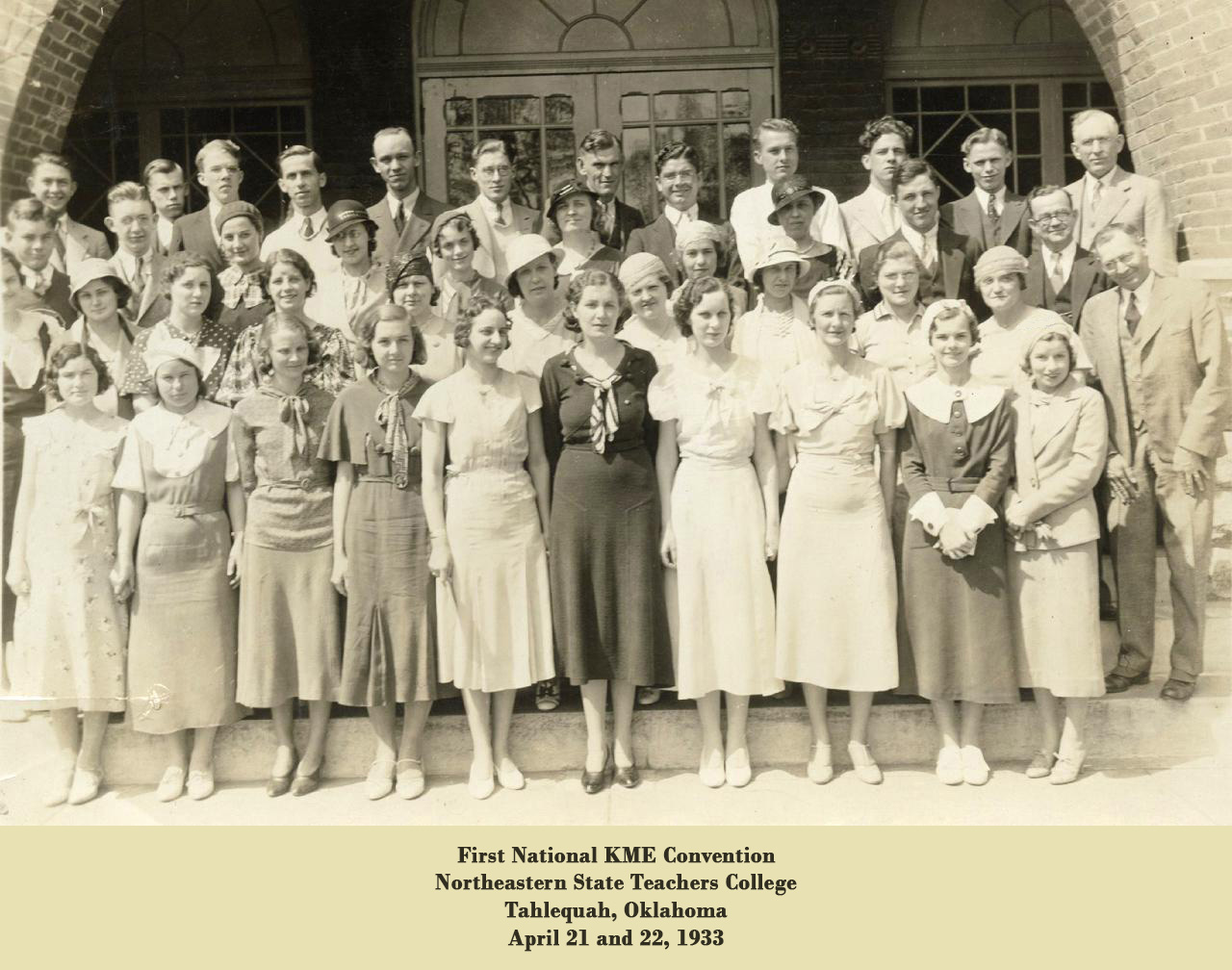
At a meeting in 1947, the National Council voted to have the initiation ritual revised, since the old ritual did not express the depth of purpose that many members felt it should. Dr. C.V. Newsom, who was then at Oberlin College in Ohio, was asked to prepare a draft of a revised ritual for the consideration of the Council. Using the draft prepared by Dr. Newsom, the ritual was revised in 1948. The initiation and installation ceremonies were further revised in February 1970. The constitution of Kappa Mu Epsilon has likewise undergone a number of revisions to have it conform to the needs of the Society. The most recent revisions were approved at the 38th Biennial Convention in April, 2011 at Harris-Stowe State University in St. Louis, MO.

The Pentagon is the official journal of the Society. The first issue appeared in the fall of 1941 after the concept of an official journal for Kappa Mu Epsilon was approved at the Fifth Biennial Convention April 18 and 19, 1941. The task of planning the journal and formulating its editorial policy was entrusted to Dr. C.V. Newsom who was at the University of New Mexico, Albuquerque. Dr. Newsom served as editor until his resignation in 1943. Dr. O.J. Peterson, who was then National President, said, "The publication of such a journal is probably the most significant project ever undertaken by the fraternity." This magazine was to cater to the needs of the college students of mathematics and serve as a medium through which outstanding student papers could be published. The journal is now published semiannually in the spring and fall of each year. Articles of interest to undergraduate mathematics students are included, assisting the Society in achieving its objectives. News items about various chapters and their activities, as an aid to establishing ties between the chapters, are also included, as is a problems section. In 2011, the National Council proposed that publication of The Pentagon be changed to an online format. Dr. Charles (Chip) Curtis, Pentagon Editor from Missouri Iota, and Dr. Don Tosh, Pentagon Business from Missouri Theta, began publishing The Pentagon on the home page of the society, and converted all original paper copies back to the fall of 1941 into scanned electronic copies.
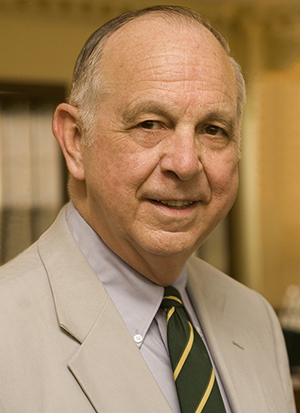
In the early 1970's, the National Council approved the publishing of a brochure which tells the Kappa Mu Epsilon story to prospective members and prospective chapters. The responsibility of designing, writing, editing, and publishing such a brochure was given to Dr. James E. Lightner, Western Maryland College, Westminster. With a great deal of assistance from Sister John Frances Gilman, Niagara University, Niagara University, New York, the completed brochure was distributed at the 20th Biennial Convention. Since then, new brochures are printed in every biennium that includes the names of current officers and all active chapters. Copies of the brochure are sent to every active chapter to distribute to all initiates.
Since national conventions of Kappa Mu Epsilon are held biennially, in odd-numbered years, some chapters met on a more localized basis at regional conventions in the even-numbered years. In order to encourage regional conventions, the National Council approved a formal regional organization for Kappa Mu Epsilon in 1970. This regional structure was first announced at the 18th Biennial Convention. The active chapters were divided into six regions, originally numbered from 1 to 6, and now named New England, Great Lakes, South Eastern, North Central, South Central, and Western, respectively. A regional director is appointed for each of these regions. Their duties included the encouragement, facilitation, and coordination of regional conventions in the even-numbered years. In addition, they promote the general interests of Kappa Mu Epsilon in the region and assist the National Council when possible.
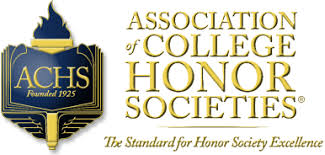
Kappa Mu Epsilon was granted membership into the Association of College Honor Societies in 1968. The mission of the Association of College Honor Societies is to build a visibly cohesive community of national and international honor societies, individually and collaboratively exhibiting excellence in scholarship, service, programs, and governance. The Association is a community of honor societies banded together to provide leadership and a unified voice to forge a strong shared image by:
- Acting as the coordinating agency for college and university honor societies.
- Providing for the consideration of matters of mutual interest, such as administrative concerns, establishment and maintenance of scholastic and other standards, membership costs, and functions of honor societies, and encouraging and facilitating collaboration and cooperation among honor societies with similar goals, so that they may better meet the needs of the honors community.
- Defining honor societies of the several types and to classify existing societies into their proper categories under these definitions.
- Cooperating with college and university faculties and administrative officers in developing and maintaining high standards and useful functions within honor societies which are organized or seek to be organized.
- Collecting, publishing, and distributing information and data of value to honor societies, colleges, universities, and publishers of directories and journals.
- Encouraging in its member societies the promotion of excellence in scholarly achievement and such core values as honor, integrity, character, and leadership. (By-Laws of the Association of College Honor Societies)
Kappa Mu Epsilon observed its Golden Anniversary in conjunction with its 23rd Biennial Convention in 1981. At that time, in recognition of their major contributions to the organization during its first fifty years, fifty individuals were honored with "Distinguished Member Awards." The names of these individuals, along with their respective contributions, are listed in the Golden Anniversary Banquet Booklet. In 1987, at the 26th Biennial Convention, Dr. James Smith, National President, cited Dr. George Mach for his many contributions to Kappa Mu Epsilon and announced the establishment of a special award named in his honor.
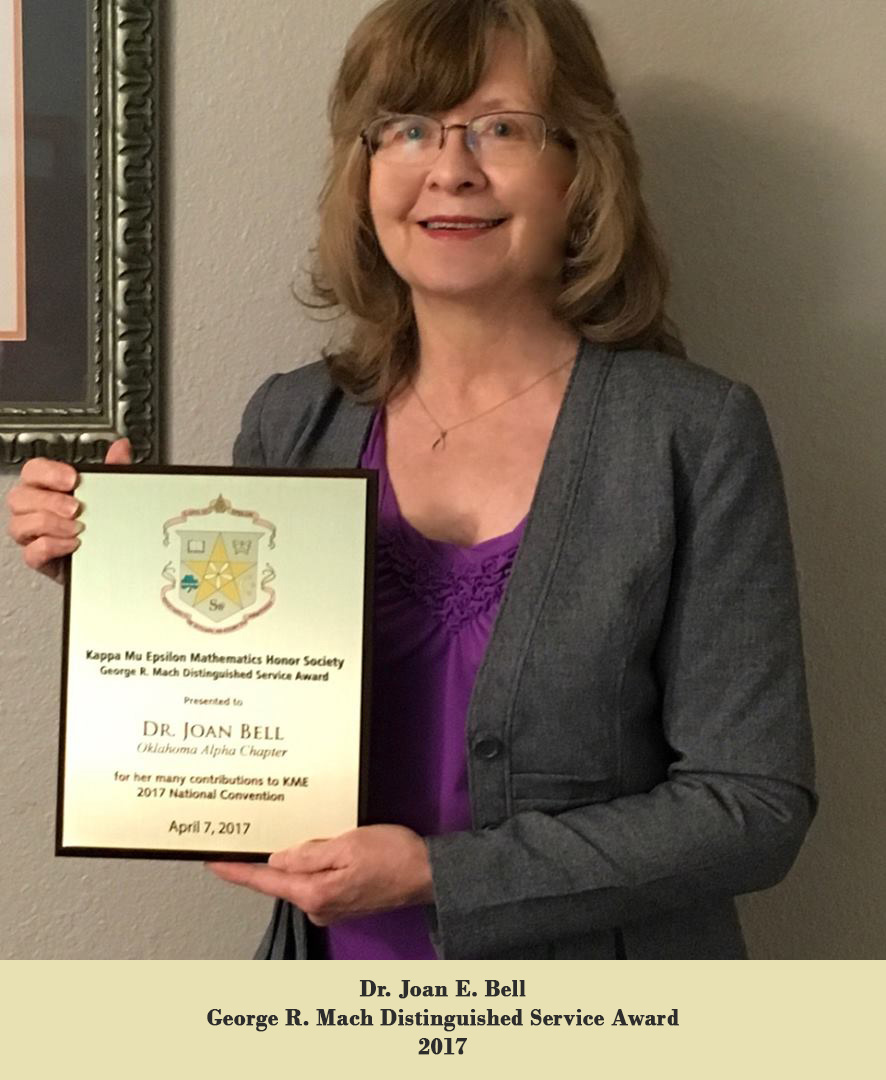 Dr. Mach served as National Vice-President from 1966 to 1969, National President from 1969 to 1973, Past President from 1973 to 1977, and National Secretary from 1977 to 1987. In his honor the George R. Mach Distinguished Service Award was established by the National Council to be given each biennium to an individual who has made major contributions to the Society. Nominations for the award are solicited from each chapter in the spring of those years in which no biennial convention is held. From these nominations the National Council determines the recipient for that biennium. The presentation is made at the next biennial convention and the local chapter with which the recipient was affiliated during the time of his or her outstanding service to Kappa Mu Epsilon receives a monetary award. Immediately after announcing the establishment of the award, Dr. Smith named the inaugural recipients, Miss Laura Z. Greene, Kansas Delta, and Dr. Wilbur Waggoner, Michigan Beta, both former national officers who devoted many years of service to Kappa Mu Epsilon. Miss Green served as National Historian from 1951 to 1955 and National Secretary from 1955 to 1973. Dr. Waggoner served as Business Manager of The Pentagon from 1957 to 1977 and National Treasurer from 1977 to 1983. Since that time Dr. Fred Lott, Iowa Alpha, has also received the award. Dr. Lott, who served as Editor of The Pentagon from 1959 to 1965, National Vice-President from 1965 to 1966, National President from 1966 to 1969, and National Past President from 1969 to 1973, was presented the award at the 27th Biennial Convention in 1989. Sister Helen Sullivan, O.S.B., who founded the Kansas Gamma Chapter in 1940, was chosen as the 1991 recipient; in addition to serving as National Historian from 1943 to 1947, Sister Sullivan was an active participant at many national conventions, serving on numerous convention committees. Other Mach Distinguished Services Awards were presented to Dr. James Lightner of Maryland Beta in 1993; Dr. Carl Fronabarger of Missouri Alpha in 1995; Dr. James Smith of Ohio Zeta in 1995; Dr. Harold Thomas of Kansas Alpha in 1997; Sister Jo Ann Fellin, OSB of Kansas Gamma in 2001; Dr. Kenneth Wilke of Kansas Delta in 2001; Miss Mary Elick of Missouri Iota in 2003; Dr. Arnie Hammel of Michigan Beta in 2005; and Dr. A. Allan Riveland of Kansas Delta in 2007. No Mach Award was presented at the 2009 Convention, so at the 2011 National Convention, two Mach Awards were presented. The first was presented to Dr. Pat Costello of Kentucky Alpha at Eastern Kentucky University; he was Corresponding Secretary for 25 years, host of the 1983 national convention, Southeast Region 3 Director from 1989 to 1997, National President-Elect from 1993-1997, National President from1997-2001, and still now serves as Problem Corner Editor for The Pentagon since 2006. Also receiving the award at the 2011 National Convention was Dr. Don Tosh from Missouri Kappa at Drury University; he served as the Corresponding Secretary for over 25 years, National Historian from 1997 to 2001; National President-Elect from 2001 to 2003; National President from 2005 to 2009; and still serves today as the Business Manager of The Pentagon since 2006. Dr. Robert Bailey was presented the Mach Award at the 2013 National Convention; he was Corresponding Secretary of New York Eta from 1968 to 2006, National Secretary 1987 to 1995, President-Elect 1997 to 2001, and President 2001 to 2005. In 2015 Dr. Ron Wasserstein of Kansas Delta at Washburn University received the Mach Award. Dr. Wasserstein as National President Elect from 2005 to 2009, and as President from 2009 to 2013. At the 2017 National Convention, the Mach Award was presented to Dr. Joan E. Bell of Oklahoma Alpha at Northeastern State University in Tahlequah, Oklahoma. Dr. Bell served as the corresponding secretary of the OK Alpha chapter for 30 years, from 1985 to 2014.
Dr. Mach served as National Vice-President from 1966 to 1969, National President from 1969 to 1973, Past President from 1973 to 1977, and National Secretary from 1977 to 1987. In his honor the George R. Mach Distinguished Service Award was established by the National Council to be given each biennium to an individual who has made major contributions to the Society. Nominations for the award are solicited from each chapter in the spring of those years in which no biennial convention is held. From these nominations the National Council determines the recipient for that biennium. The presentation is made at the next biennial convention and the local chapter with which the recipient was affiliated during the time of his or her outstanding service to Kappa Mu Epsilon receives a monetary award. Immediately after announcing the establishment of the award, Dr. Smith named the inaugural recipients, Miss Laura Z. Greene, Kansas Delta, and Dr. Wilbur Waggoner, Michigan Beta, both former national officers who devoted many years of service to Kappa Mu Epsilon. Miss Green served as National Historian from 1951 to 1955 and National Secretary from 1955 to 1973. Dr. Waggoner served as Business Manager of The Pentagon from 1957 to 1977 and National Treasurer from 1977 to 1983. Since that time Dr. Fred Lott, Iowa Alpha, has also received the award. Dr. Lott, who served as Editor of The Pentagon from 1959 to 1965, National Vice-President from 1965 to 1966, National President from 1966 to 1969, and National Past President from 1969 to 1973, was presented the award at the 27th Biennial Convention in 1989. Sister Helen Sullivan, O.S.B., who founded the Kansas Gamma Chapter in 1940, was chosen as the 1991 recipient; in addition to serving as National Historian from 1943 to 1947, Sister Sullivan was an active participant at many national conventions, serving on numerous convention committees. Other Mach Distinguished Services Awards were presented to Dr. James Lightner of Maryland Beta in 1993; Dr. Carl Fronabarger of Missouri Alpha in 1995; Dr. James Smith of Ohio Zeta in 1995; Dr. Harold Thomas of Kansas Alpha in 1997; Sister Jo Ann Fellin, OSB of Kansas Gamma in 2001; Dr. Kenneth Wilke of Kansas Delta in 2001; Miss Mary Elick of Missouri Iota in 2003; Dr. Arnie Hammel of Michigan Beta in 2005; and Dr. A. Allan Riveland of Kansas Delta in 2007. No Mach Award was presented at the 2009 Convention, so at the 2011 National Convention, two Mach Awards were presented. The first was presented to Dr. Pat Costello of Kentucky Alpha at Eastern Kentucky University; he was Corresponding Secretary for 25 years, host of the 1983 national convention, Southeast Region 3 Director from 1989 to 1997, National President-Elect from 1993-1997, National President from1997-2001, and still now serves as Problem Corner Editor for The Pentagon since 2006. Also receiving the award at the 2011 National Convention was Dr. Don Tosh from Missouri Kappa at Drury University; he served as the Corresponding Secretary for over 25 years, National Historian from 1997 to 2001; National President-Elect from 2001 to 2003; National President from 2005 to 2009; and still serves today as the Business Manager of The Pentagon since 2006. Dr. Robert Bailey was presented the Mach Award at the 2013 National Convention; he was Corresponding Secretary of New York Eta from 1968 to 2006, National Secretary 1987 to 1995, President-Elect 1997 to 2001, and President 2001 to 2005. In 2015 Dr. Ron Wasserstein of Kansas Delta at Washburn University received the Mach Award. Dr. Wasserstein as National President Elect from 2005 to 2009, and as President from 2009 to 2013. At the 2017 National Convention, the Mach Award was presented to Dr. Joan E. Bell of Oklahoma Alpha at Northeastern State University in Tahlequah, Oklahoma. Dr. Bell served as the corresponding secretary of the OK Alpha chapter for 30 years, from 1985 to 2014.
Kappa Mu Epsilon continues to change. Much of the business of the organization now takes place electronically, including the submission of chapter reports, distribution of THE PENTAGON, and distribution of most forms and information. The home page of the organization, http://www.kappamuepsilon.org, serves as a conduit for much of the information. Dr. Arnie Hammel created the first home page for the organization having it reside on his department home page at Central Michigan University. Later Dr. Pat Costello purchased the URL for the organization and developed an independent site. Kevin Reed (MO Theta) was the first webmaster of the society, followed by Dr. David Gardner (TX Gamma). Currently, Dr. John Snow (TX Kappa) is serving as KME webmaster.
